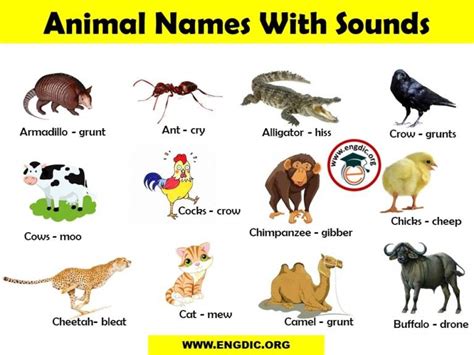Sounds of the Wild: Understanding Animal Communication
The natural world is a symphony of sounds, a vibrant orchestra composed not just of wind, water, and weather, but also of the intricate vocalizations of its animal inhabitants. Understanding animal communication—the process by which animals transmit and receive information—opens a window into their complex social structures, survival strategies, and the intricate web of life that sustains them. This isn't simply about identifying a bird's chirp or a dog's bark; it's about deciphering a language far older and more nuanced than our own.
What are the Different Ways Animals Communicate?
Animals employ a variety of methods to communicate, with sound being just one crucial element. Many rely on a multi-modal approach, combining several methods to convey a complete message. These include:
-
Vocalizations: This is perhaps the most readily apparent form of animal communication. Birdsong, whale songs, monkey calls—these sounds vary widely in complexity and purpose, ranging from attracting mates to warning of danger. The frequency, pitch, and rhythm of these vocalizations often carry specific meanings.
-
Visual Signals: Body language plays a significant role. A cat's arched back signals aggression, while a dog's wagging tail (context is crucial!) can signify happiness. Displays of color, such as a peacock's extravagant plumage, also fall into this category.
-
Chemical Signals (Pheromones): Many animals, especially insects and mammals, use pheromones—chemical substances released into the environment—to communicate. These can signal alarm, attract mates, or mark territory. Ant trails, for example, rely heavily on pheromone communication.
-
Tactile Signals: Physical touch is another vital communication method. Grooming in primates strengthens social bonds, while the gentle nudges of elephants convey affection or reassurance.
-
Seismic Signals: Some animals, like elephants and certain insects, communicate through vibrations transmitted through the ground. This allows them to communicate over long distances, even when visual or auditory signals are obstructed.
How Do Animals Use Sounds to Communicate?
Sound, with its ability to travel both near and far, plays a crucial role in many animal communication systems. Here's a breakdown:
-
Territorial Defense: Many animals, from wolves to birds, use vocalizations to mark and defend their territory. The loud calls act as warnings to potential intruders.
-
Mate Attraction: The elaborate songs of birds and the complex calls of whales serve primarily to attract potential mates. These sounds often reflect the individual's fitness and quality.
-
Alarm Calls: When danger approaches, specific alarm calls alert other members of the group to the threat. These calls vary depending on the type of predator, allowing for a tailored response.
-
Social Bonding: Many animals use vocalizations to strengthen social bonds within their group. Calls and songs can reinforce hierarchies, maintain cohesion, and facilitate cooperation.
-
Parental Care: Parents use specific sounds to communicate with their offspring, guiding them, warning them of danger, or soliciting care.
What are some examples of animal communication using sound?
Whale songs: Humpback whales are renowned for their complex and haunting songs, which can last for hours and travel for miles underwater. The function of these songs is still debated, but it's likely related to attracting mates and maintaining social cohesion.
Bird songs: Birdsong is incredibly diverse, with each species possessing its own unique repertoire of calls and songs. These serve a variety of purposes, from attracting mates to defending territory and warning of danger.
Primate calls: Different monkey species utilize a wide range of calls to communicate a variety of information, such as location, the presence of food, or the approach of a predator.
Insect chirps and buzzes: The chirping of crickets, the buzzing of bees, and the clicking of cicadas are all forms of acoustic communication that often play a vital role in mate attraction and territorial defense.
How Do Scientists Study Animal Communication?
Ethologists and other scientists use a variety of methods to study animal communication:
-
Observational Studies: Carefully observing animals in their natural habitat allows researchers to document their communication behaviors.
-
Playback Experiments: Playing recordings of animal sounds allows scientists to study the responses of other animals to specific vocalizations.
-
Acoustic Analysis: Advanced technology allows researchers to analyze the complex acoustic structures of animal sounds, revealing subtle variations in pitch, frequency, and timing.
Understanding animal communication is a continuous journey of discovery. By unraveling the complexities of their sounds and other communication methods, we gain a deeper appreciation for the richness and diversity of life on Earth. It also holds practical applications, informing conservation efforts, improving animal welfare, and offering insights into the evolution of communication itself.

